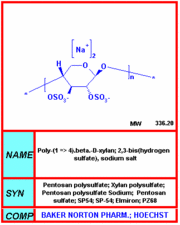NEW ORLEANS -- Interstitial cystitis is a commonly missed diagnosis, Dr. Joslyn Fisher said at the annual meeting of the American College of Physicians.
As a cause of chronic pelvic pain in women, interstitial cystitis (IC) presents a major clinical conundrum. Because the disease lacks a specific marker, the diagnosis is made when all else--including recurrent urinary tract infections, endometriosis, overactive bladder, fibromyalgia, and prior or current sexual abuse--is ruled out, said Dr. Fisher of Baylor College of Medicine and Ben Taub General Hospital, Houston.
Interstitial cystitis affects about 700,000 people in the United States, but that number may be a vast underestimate, depending on how the condition is defined. In 1988, the National Institute of Diabetes, Digestive, and Kidney Diseases established research criteria for IC: There must be pain, urgency, and frequency, as well as glomerulations (pinpoint bleeding from bladder distension,) or Hunner's ulcer on cystoscopy; in addition, 13 more conditions, including other types of cystitis, must be excluded (J. Urol. 140[1]:203-06, 1988).
The clinical usefulness of the NIDDK criteria is debated. Even urologists are avoiding cystoscopy, which is invasive and not specific or sensitive. Recent data suggest that glomerulations are seen in as many as half of women without IC, whereas Hunner's ulcer occurs in fewer than 10% of women with IC.
Other invasive diagnostic tests are advised only if there is a specific concern. For example, biopsy is recommended to rule out bladder cancer, urodynamics for suspected detrusor instability, and pelvic/vaginal ultrasound to look for fibroids.
A new tool called the Pelvic Pain and Urgency/Frequency (PUF) scale has been shown to predict the likelihood that a woman would test positive on a potassium sensitivity test (PST) performed via cystoscopy, in which instillation of potassium chloride during hydrodistension causes pain in those with IC.
The PUF questionnaire scores a patient from 1 to 35 on questions like "How many times do you go to the bathroom during the day/night?" and "Do you have pelvic or bladder pain?" A score of 15-19 predicts a 76% likelihood of having a positive PST, and a score of 20 or above suggests a 90% probability (Urology 60[4]:573-78, 2002).
The NIDDK is studying the usefulness of urine biomarkers to diagnose IC, which is thought to arise from a combination of factors, including a defect in the protective glycosaminoglycan layer, an allergic reaction/mastocytosis, and neurogenic inflammation. Antiproliferative factor seems the most promising of several markers being studied in the NIDDK's multicenter Interstitial Cystitis Clinical Trials Group/Research Network, she said.
Treatment is based on symptoms. Small studies suggest some benefit from various nonpharmacologic interventions, including avoidance of irritants, such as caffeine, chocolate, and citrus or other acidic foods; pelvic floor rehabilitation (Kegel exercises); acupuncture; and transcutaneous electrical nerve stimulation.
Giving the patient a name for her condition is often enormously helpful, as is social support. The Web site of the Interstitial Cystitis Association (www.ichelp.org) provides helpful information and support.
Pentosan polysulfate (Elmiron) is the only drug approved by the Food and Drug Administration for the treatment of IC. The dosage is 100 mg three times daily. Data from small studies suggest that the heparin-like agent must be taken for at least 3 months to produce any improvement and for 6 or more months for resolution of symptoms. Symptoms return if the drug is discontinued.
Nonrandomized trials suggest that some patients may benefit from antihistamines--hydroxyzine is the most widely studied--because of IC's characteristic mast cell infiltration. Antihistamines might be helpful in patients who have IC and other allergic symptoms, she said.
BY MIRIAM E. TUCKER
Senior Writer
COPYRIGHT 2004 International Medical News Group
COPYRIGHT 2004 Gale Group



